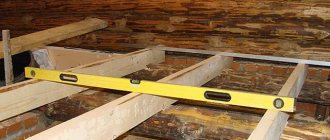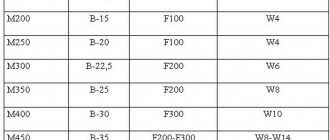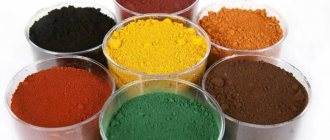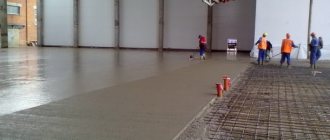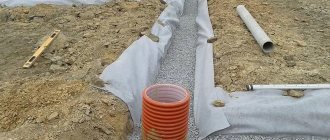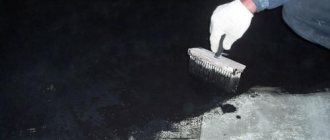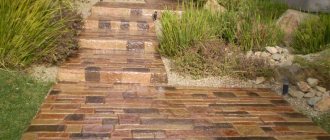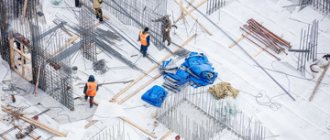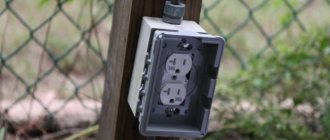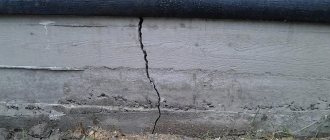Properties of concrete
The most popular building material is obtained by combining cement, sand and water. And to improve strength and other properties, various fillers are added to the composition. Modern technologies have also made it possible to improve the quality of the mixture by an order of magnitude by introducing plasticizers into it.
Basic properties of concrete:
- Durability . The main indicator, which depends mainly on the quality of the fillers. Most often, in addition to sand, crushed stone is added to the composition. Strength is influenced by two factors. This is a brand of cement and water. Therefore, the reliability of cement stone is determined by the percentage of liquid from the bulk of the cement. And it is the latter that is responsible for the second property.
- Porosity . The more it is, the more convenient it is to work with the mixture. It can also increase the thermal insulation of the material. Therefore, it is even created artificially, by introducing special additives. But in order to increase the moisture-resistant qualities needed, for example, for load-bearing slabs, the percentage of water in the composition is reduced to a minimum.
Porosity of concrete Source egaac.ru
- Density _ More porous compositions are considered lighter. And they are used for the construction of fences and partitions. Heavy mixtures to which hard rocks are added are used in the production of load-bearing structures. But there is also reinforced concrete. This variety contains elements made of steel or cast iron. And it goes to special purpose objects.
- Water resistance . Protection of concrete from moisture is an important indicator. It is necessary for trains that participate in the construction of dams, piers and jetties. And before assigning a certain resistance class to concrete, the material must be tested.
- Frost resistance . This parameter completely depends on the number and characteristics of the pores. And for the highest stability, it is necessary to use hydrofibing additives together with plasticizers.
- Fire resistance . This indicator is present by default, since there is nothing to burn in the composition. But prolonged exposure to flame promotes the evaporation of all water (including chemical) from the mixture. And this will lead to loss of strength. Therefore, special heat-resistant concrete includes alumina cement. And also fire-resistant fillers.
Heat-resistant concrete Source stroi-baza.ru
- Thermal conductivity . This indicator is higher for concrete than for brick. But significantly lower than steel. And this makes the material the most popular for construction.
All of the above parameters are important in the construction of all objects without exception. Starting from an ordinary pedestrian path on a private plot. And ending with special purpose structures.
Protection of concrete from frost
Frost is another factor that has a negative impact on the quality and durability of the foundation. To protect concrete from exposure to low temperatures, builders use:
- sulfide-yeast mash, which is added to the main solution, thereby increasing its stability and strength;
- sawdust.
Basically, it is frost that destroys the structure of concrete. Therefore, at air temperatures below -20°C, the concrete foundation should be sprinkled with sawdust. If this is not done, then after winter the cement may become unusable.
Destructive factors
In order to find out how to cover a concrete area on the street against destruction, you need to study all the factors acting on the material. Only then will it be possible to effectively protect the outer coating. And also to qualitatively repair it in case of damage that has already occurred.
Physical factors
The main enemy of concrete is the external temperature. But only critical. Under normal conditions, the composition retains all its characteristics completely and for a very long time. But frosts can cause irreversible consequences.
Frozen concrete Source nwl-group.ru
If moisture gets into a porous material at normal temperatures, then this is already a danger in areas with frosty conditions. Freezing liquid creates tension that can crack the structure. Therefore, for regions where thaws often occur in winter, it is necessary to apply protective measures.
It is best to reduce the porosity of concrete during its production. To do this, reduce the percentage of water in the composition. Or they add special additives (frost-resistant and air-entraining). But you can also treat the finished surface by applying another coating for outdoor concrete on top. It isolates the pores from moisture entering them.
High temperatures can also cause cracks to appear on the concrete surface. For example, rupture of the binder with the filler can occur when extinguishing a fire. Filling a heated surface with water will restore the dimensions of the expanded reinforcement. And the rate of compression of the metal does not coincide with the time it takes for the concrete itself to return to normal.
Concrete flooded with water Source pexels.com
Or the flame will contribute to the formation of lime. And when heated, it releases steam. And with a lot of fire this will happen too quickly. The release of condensate will cause the material to rupture.
Ordinary shrinkage is also to blame for the appearance of cracks. It is easy to deal with when the solution hardens (wetting the surface in summer). And against hygrometric it is necessary to use special plasticizers.
Chemical moments
The main enemy for concrete is calcium carbonate. It causes corrosion of reinforcement. As a result, the concrete around it swells and may even peel off. And oxygen and moisture getting inside will only add to the destruction.
Calcium carbonate appears due to:
- concentration of carbon dioxide in the air exceeding the norm;
- increased industrial pollution;
- features of concrete operation;
- exposure of the surface to chlorides, sulfates, and alkalis.
Concrete corrosion Source blog-potolok.ru
The second enemy is considered to be natural impurities in the form of gypsum and anhydrides. Sea salt can seriously damage the structure of concrete. Outdoor concrete coatings can be damaged if silica is present in the solution. It turns into a gel over time. The substance expands greatly in volume and swelling occurs, as well as the appearance of cracks.
Mechanical risks
This includes impact, which easily breaks joints and seam edges. Strength is reduced due to normal erosion. The latter occurs with constant pressure from winds. Or regular glaciation. Mold or mildew can also affect the strength of the material.
But to a greater extent, loads are to blame for the destruction. And if the upper layers of concrete are affected by gravity, which also moves, then they are more likely to be damaged. This must be taken into account when covering a concrete area on the street for a car. Spikes on the tires of a car also act as an additional factor that increases destruction.
Studded tires Source vsekolesa.ru
How can you protect concrete from destruction?
In view of the above, we can come to the conclusion that it is necessary to think through the future protection of the concrete surface at the stage of creating the solution. After all, when all the factors that will affect the concrete coating are known, it is always easier to neutralize the causes. Or reduce their influence.
Of course, to effectively defend yourself in this case, you need to have a good knowledge of construction science. But in order to improve the quality of concrete, there is no need to undergo lengthy training. Quite narrow knowledge is enough. For example, be able to choose cement for mortar by brand.
Application of cement mortar depending on marking:
- M100 is suitable for addition to road surfaces.
- M150 can be used for screeding a concrete floor with subsequent cladding.
- M200 is already widely used in construction and is even used for load-bearing structures.
- M250 is excellent for pouring foundations.
- M350 is needed for the manufacture of load-bearing beams that bear increased load.
- M450 is used in the construction of structures with special requirements.
- M500 is needed for bridges and hydraulic structures.
Super cement Source contrust.ru
There is also Portland cement, which has excellent adhesion. This is an excellent protection for concrete from destruction on the street. It is good to use when it is necessary to carry out construction at low temperatures. But the main requirement when choosing cement is to always use only dry material.
Next, you should know the main characteristics of fillers. For example, to create a super-strong mortar you need to take sand with a fraction of 1 mm. In this case, sifting is necessary to get rid of debris, which in the future can affect the strength. And it’s better to take only river sand.
A good solution is obtained by adding crushed stone or gravel to it. There is a little trick. To increase the future strength, you need to take filler of different fractions. And when pouring, it is necessary to pay special attention to compacting the mixture.
And no matter how trivial it may sound, for a durable solution you only need clean water. There is no need to specially treat the liquid. You can safely use regular drinking water from the tap. The main thing is that it contains as few different impurities as possible.
Clean water Source foto.my.mail.ru
See also: Catalog of companies that specialize in paints and varnishes and related work
The next step to create a strong concrete surface is to add various additives to the solution. For the most part, these are different plasticizers that increase the characteristics of concrete. There are also anti-frost additives. But most often, the treatment of concrete against destruction on the street includes reinforcement.
Moreover, modern technologies make it possible to use not only metals for this. Recently, polypropylene materials or PVC fabric have begun to be widely used. And we must not forget about hydraulic seals, which make the surface resistant to moisture.
But if concrete walls have been standing for quite some time, they can also be strengthened and protected from negative factors. For this purpose, a special coating is made for outdoor concrete to prevent destruction. The surface is treated with it, and it begins to reflect the influences directed at it.
There is another way to protect old surfaces. They are impregnated with compounds that strengthen the structure of concrete. In particular, a special substance penetrates deeply inside and fills all pores. This significantly strengthens the entire structure.
Concrete impregnation Source kraski-net.ru
Surface treatment
This is also an excellent way to protect concrete from destruction on the street.
Protection in conditions of moderate aggression
The finished structure is stable for a long time in solutions of salts, alkalis, acids at operating temperatures up to 60 degrees
To protect structures from all negative factors, including acid-salt action, predominantly polyurethane and epoxy resins are used . Such systems include a primer and a base coat.
Under atmospheric conditions (temperature changes, moisture, ultraviolet radiation, aggressive gases), organosilicon and water-dispersed acrylic paints have proven themselves well. The material forms a dense, thin barrier that protects concrete from all negative atmospheric phenomena.
Protection in conditions of strong aggression (special surface protection)
If operating conditions are such that concrete is subject to severe aggression and high temperatures, it is recommended to use compositions based on vinyl esters, furan polymers, liquid glass, and special repair and restoration cement systems. The practice is that the aging of concrete under the influence of technogenic factors takes place at a high rate, so special protective materials should not be neglected .
According to the technology, at the first stage, concrete structures are gummed (treated) with materials based on PVC and rubber.
Types of processing:
- soft vulcanized gumming based on PVC and butyl rubber - for concrete building structures in the chemical industry;
- the same, but based on bromobutyl rubber – lining of tanks, channels, containers under the influence of smoke and gases;
- double-sided gumming based on chlorobutyl rubber - for concrete structures in waste incineration plants;
- the same, but based on PVC and chlorobutyl rubber - for concrete under the influence of hydrochloric acid.
Next, special protective coatings are used:
- high-performance systems applied using a spatula - protecting concrete from strong mechanical and chemical loads. The base is polyurethane, epoxy resins or vinyl esters;
- spray coatings - the base is polyurethane, complex vinyl, epoxy resins.
Restorative modified cement mortars should be placed in a separate category. Such systems are characterized by high stability on vertical and horizontal planes, resistance to oils, water, gases, and salts.
Scope of application : power plants, pickling plants and tanks, pharmaceutical plants, flue gas treatment plants, non-ferrous metals mining, ferrous metallurgy, pulp and paper industry.
Advantages:
- optimal protection of concrete structures;
- resistance to concrete vibrations;
- tightness;
- thermal resistance;
- resistance to aging.
Special surface protection of concrete can protect against the action of water vapor, salt solutions, alkalis, acids, chemicals
Flaws:
- price.
Creating strong compounds
Let's consider how to treat concrete at the stage of its creation in order to produce a particularly durable composition that can resist external aggressive influences. Most often, various plasticizers are added to solutions, which add new properties to them or enhance existing ones. But there are also other ways to increase strength.
Plasticizers
This additive can increase the plasticity of concrete mortar. Add fluidity and mobility to it. These properties make it easier to work with concrete when pouring it into molds. But at the same time, the density of the substance is completely preserved, which would be reduced if the solution was diluted with water.
The plasticizer also helps the compounds adhere to each other faster. It also increases basic strength and increases service life. But the main thing is that there are additives that can reduce vapor permeability, increase resistance to moisture and protect against frost. And they act as a reliable protective coating for concrete on the street.
Solution with plasticizer Source biostar-russia.ru
Common brands of plasticizers for concrete:
- RS is added to mortars used for brick or stone masonry. The additive increases adhesion and reduces water separation.
- C-3 gives concrete mobility and increases water resistance and frost resistance. Reduces cement consumption and also reduces the required time spent in the formwork.
- PC-1 reduces the water requirement of the solution and increases its plasticity. Does not contain antifreeze components.
- PC-2 has an order of magnitude better effect on the solution than the previous version. It is also used where concrete must come into contact with drinking water.
- PKL-1 significantly increases strength characteristics. It is used for the manufacture of curbs, paving slabs and piles. Does not contain antifreeze components.
- PCL-2 differs from the previous additive in that much less of it is needed.
- “ WINTER ” is used in frosts that can drop to -25 °C.
All plasticizers can accelerate the hardening of the solution. And also increase the thermal insulation properties. Moreover, the density of concrete does not change at all from the specified one.
Concrete additive Source geogips.ru
Fiber fiber
The addition of polymer fibers to concrete solutions can enhance their characteristics. And even get mixtures with new parameters. First of all, this is a significant increase in strength. And such concrete is used for the construction of sea fortifications and the construction of reservoirs.
New developments even make it possible to obtain antibacterial compounds. As well as heavy-duty thin concrete for covering asphalt. Additives made from olefin fibers also prevent concrete from chipping during prolonged exposure to fire. And all the properties obtained made it possible to replace conventional metal reinforcement with fiber fibers.
Such concrete is even able to combat cracks that occur during hygrometric shrinkage. The composition has high abrasion resistance. It also tolerates freeze-thaw cycles better than others. The technology is increasingly being used in the United States, but is gradually beginning to conquer Europe. And in terms of quality, this is the best polymer coating for outdoor concrete floors.
Fiber fiber Source prom.st
Magnetization of water
Since liquid is an important component for creating a concrete mixture, research has often been done with it. They tried to modify the water several times. For the most part, it didn't end well. But one of the developments yielded unexpected results.
Magnetizing the water for mixing the solution increased its strength by an average of 50%. True, there is seasonality. So in September, the strength of concrete increases by only 25%. And from May to August, an increase of a maximum of 5% can be achieved. The reasons for this phenomenon have not yet been fully elucidated.
Experiments began to be carried out back in the distant Soviet years. And there is even a certificate issued that confirms the growth and strengthening of crystallization structures. And this led to an increase in the strength of the cement stone. But since the research was never completed, industrial development never followed.
Magnetized water Source valenciaplaza.com
Other Supplements
If you add silicon to concrete in a proportion of 10% of the bulk of the cement, you can get a stronger composition. And it can be used as a coating for concrete floors outdoors, since it increases water resistance and resistance to acids. This solution better tolerates increased ambient temperatures.
The addition of calcium chloride helps in the production of foam concrete. The substance significantly accelerates hardening. And this not only reduces manufacturing time, but also reduces the amount of cement. And with absolutely no loss of strength.
Hydromix. This is the name of a water-repellent additive, which is introduced into the concrete coating on the street to add water resistance and also reduce water absorption. The additive is used for structures experiencing groundwater pressure. As well as those under load from sewage and rainwater flows.
Impregnations
Concrete is positioned everywhere as a material that is not afraid of water. In fact, liquid is its worst enemy. Water threatens a concrete structure, both from below from the soil and from above from the atmosphere. And it’s very easy to get inside, since the structure is porous.
In the first case, due to the influence of various salts, cracks appear on the surface and even the plaster is torn off from the base. Rainwater is dangerous not only when it freezes inside the pores. It captures from the atmosphere everything that got there during industrial emissions. And a vast bouquet of gases turns the rain flow into an acidic solution.
Therefore, the use of various primers after the concrete structure has hardened will not be superfluous. And the most effective protection of concrete from moisture is impregnation. Drying oil and liquid glass are considered simpler. They simply tightly close the pores, making it impossible for water to penetrate inside.
But there is also a huge line of professional primers with a large number of different properties. And the best is considered to be a hydrophobic impregnation based on organic silicon. A distinctive feature of such a liquid is its ability not to close the pores, but to create a thin protective layer in them from water. And since the voids remain, the insulating properties are maintained.
Protection of concrete from corrosion
Corrosion is a chemical process in which, under the influence of various sulfates or chlorides, a material is destroyed at the molecular level. The main cause of corrosion is exposure to precipitation. There is also physical corrosion, which manifests itself as a result of the freezing of water inside the concrete foundation: when the air temperature drops, the water solidifies, which leads to the appearance of cracks in the foundation.
To protect concrete from corrosion, the following means are used:
- impregnating and film-forming substances;
- acrylic coatings to prevent damage.
This product forms a protective layer that prevents meteorological phenomena from destroying the concrete.
Sheet and roll materials
Of course, this protection is good if it is possible to use it. It is necessary to close the concrete structure especially where the temperature difference between seasons is quite significant. Sheet and roll insulation retains its properties for a long time, and in some cases even acts as a finishing coating for concrete.
Membranes
Sheets of polyvinyl chloride are laid overlapping on concrete and then welded with a gas torch. The result is a very durable surface, but not resistant to gasoline or machine oil. Rubber-based membranes are more versatile in repelling negative impacts.
Such protection has the advantage of being able to quickly cover large areas. And the ability to stretch helps well where the surface has reliefs. And the only disadvantage is that the sheets need to be vulcanized together.
Bitumen sheets
Good protection of concrete from atmospheric influences is obtained by using fiberglass fabrics. There is also fiberglass. But it is more fragile and is considered only a temporary measure. And the best ones are the sheets with sprinkles.
Bitumen sheet Source dianauto.ru
Fiberglass fabric can retain its properties for a very long time. Among which water repellency and fire resistance are valued. The material is also resistant to chemical influences and easily withstands physical stress.
Ruberoid
Acts as a budget protection for concrete. But this makes it no less high quality than the previous ones. The only difficulty is installing the material. It must be laid in at least two layers. Moreover, the next one must be shifted in order to close the seams of the first one. And for complete insulation, installation is carried out on hot bitumen.
Application of protective coatings
As a rule, most formulations are used in combination with other measures. But they can often be found as a finishing coating for a concrete surface. All have excellent water-repellent properties.
Mastics
There are two types - bitumen and polymer. Most often used together with rolled materials. Bitumen mastic is applied in two ways - cold and hot. In the first case, pieces of bitumen are dissolved in a special liquid until the desired consistency is obtained. Secondly, they melt it with fire.
Polymer mastic for concrete Source siteapi.org
Bitumen adheres perfectly to concrete, but has a number of disadvantages. It cannot be used in regions with hot climates, since the material spreads under direct sunlight. Therefore, it is not recommended to use it solo. In addition, the installation process together with roofing felt takes a very long time.
A polymer coating for outdoor concrete has better performance characteristics. It does not react at all to temperature changes. The composition does not take long to prepare for use and can be used as a finishing layer.
Liquid waterproofing agents
It should be said separately about the polyurethane solution. It falls into the category of primers. But if any of the primers cannot be used as a complete waterproofing material, then polyurethane can easily replace mastic. And it is this solution that experts recommend using for external waterproofing.
And on top of everything else, the composition also strengthens the concrete by impregnation on the street. It also completely removes dust from the surface.
But there are also disadvantages:
- To work, you only need warm weather (from +18 °C).
- It is necessary to wait until the concrete has completely set.
- Requires application in two layers.
Applying waterproofing Source evrostroibest.ru
Some people also don’t like the fact that to prepare the solution you need to mix two liquids. Moreover, it is necessary to maintain exact proportions.
Rubber
The liquid composition is two-component. It adheres perfectly to concrete and does not allow a drop of liquid to pass through to it. Can be used as a topcoat, applied either by spraying or pouring. Due to the problematic preparation of the solution and the need to use complex equipment, it is used only by professionals.
Technology for applying strengthening impregnations based on PVC resins
Work on applying impregnation is preceded by preliminary preparation. Surfaces must be cleaned of all dirt and remnants of old coatings. The material cannot be applied to cement laitance, as this will prevent penetration into the thickness of concrete. Sanding, sandblasting or shot blasting are used for cleaning and preparation.
Tools used : brushes, rollers
The average consumption of reinforcing impregnations based on PVC resins is 0.2-0.35 liters per sq.m.
Application
The impregnation is distributed over a dry, cleaned base. If uneven absorption is detected, it is recommended to apply another layer. Work is carried out at a temperature not lower than – 20 degrees. Drying time – 3-6 hours.
Fur coat on concrete walls
This method is used when it is necessary not only to waterproof walls, but also to make them look beautiful. Moreover, the method is so ancient that its roots go back thousands of years. But it remains in demand to this day.
Until relatively recently, ordinary cement-sand mortar was used for fur coats. But technology has reached here too. And a modern protective coating for concrete contains polymer additives that improve all its properties.
The mixture goes on sale in two forms. Dry powder in bags and ready-made diluted solution in buckets. The plaster got its name from its resemblance to the fur of a fur coat. After all, she does not rub herself against the wall, but pounces on it. And when it hardens, it forms a rough surface.
Area of application of the fur coat:
- Building facades.
- Internal room partitions.
- Fences and barriers on the streets.
- Decoration of columns and bas-reliefs.
Technology has made working with such plaster much easier. The introduction of synthetic polymers into the composition not only enhanced the protective properties of the coating. They added plasticity and softness to the solution. And the best are considered ready-made mixtures that contain small pebbles. So they make the surface rough.
Painting a concrete coat Source womanadvice.ru
Painting concrete
This is the simplest method that solves at least two problems at once. Protects the concrete coating from atmospheric influences and gives it an attractive appearance. In addition, this is a very inexpensive and fast method of transforming the surface.
The advantages of painting concrete include:
- Periodic possibility of color change.
- Creation of a water-repellent surface.
- Possibility of wet cleaning, since dirt stops being absorbed.
The downside is poor abrasion resistance. True, the latter is corrected by the quality of work. This factor will also depend on the paint and varnish compositions used.
stain
A special composition is made for concrete, which differs from what is used for wood. But their functions are similar. Concrete stain fills all the pores in its structure. It can also change the appearance of the surface. Make it look like marble or imitate other rocks.
Stain for concrete path Source pinimg.com
The liquid solution can be translucent or intensely colored. Penetrating deep inside the concrete, the stain not only colors it, but also strengthens the structure, and also creates a surface that is resistant to water and dirt. But in order to form a high-quality film, it is necessary to apply the solution in 2-3 layers.
The composition can be used as an independent finishing coating. But you can also apply any paint with a higher density to it. In this case, the concrete is exposed with stain only once.
Rubber paint
A special composition creates an elastic coating on outdoor concrete floors that is resistant to most negative influences. For example, it can more easily withstand heavy loads and impacts and wears out much longer than treated with conventional paint.
Because of these positive properties, the composition is used to cover floors in garages, as well as paths with intense pedestrian traffic. Moreover, the service life of the outer layer is at least 10 years. And its elasticity is even used to help pedestrians. The foot gets a boost and the person spends less effort walking.
Rubber paint Source russtroy24.rf
Epoxy and acrylic compounds
These paints can be considered together, since their properties are very similar. Any of them can survive on the surface for up to five years. The compositions create an elastic coating on concrete that repels water and is not afraid of direct sunlight.
The only drawback is that they are not capable of deep penetration into the concrete structure. Therefore, to create a high-quality film, they must be applied to the surface at least twice. But it is best to use them after the concrete has been treated with a primer that matches the composition of the paint. Then the strength of the outer layer increases significantly.
Acrylic paint for concrete floors Source zhk-akvapolis.rf
Polyurethane varnishes
Excellent protection against any weather conditions is provided by polyurethane-based varnishes. Moreover, the surface of the concrete is dramatically transformed. Depending on the type of varnish, it can become perfectly glossy or noble matte.
Polyurethane varnishes for concrete have quite good advantages:
- They create a film that completely repels water.
- Increases the strength of the outer layer of concrete.
- Strengthens the internal structure.
- Resists friction.
- Increases frost resistance.
- Protects against corrosion.
- Resists a variety of oils.
- Create an attractive surface.
Polyurethane compounds help preserve all the properties of concrete for a long time. They are easy to use and you don’t need to hire professionals to treat your outdoor path.
Classification of concrete impregnations
Let's see what types of impregnations there are according to their chemical composition. There are two large groups, and they are fundamentally different in their effect on concrete:
- Inorganic (silicate).
- Organic (polymer).
We will return to the first ones when we talk about strengthening impregnations. Here we will dwell in more detail on polymer compositions. These substances create a reliable layer that repels water and any substances that could penetrate into the thickness of the concrete. It prevents cement particles from sliding off the surface due to friction and turning into dust.
Organic impregnations are divided into:
- acrylic;
- polyurethane;
- epoxy.
Let's figure out what the difference between them is.
Acrylic compounds
Pros:
- Inexpensive.
- Well suited for protecting concrete from water and chlorides.
- Do not fade from sunlight.
Minuses:
- Can't withstand heavy loads.
- Every couple of years it needs to be reapplied.
Polyurethane impregnations
These are penetrating impregnations, that is, they not only create a protective film on the outside, but penetrate inside (about 6 mm).
Pros:
- Remove dust (make the floor 10 times more resistant to wear).
- Withstands harsh chemicals.
- Impact-resistant (any grade of concrete, starting from M350, is made comparable in strength to M600).
- More water resistant than acrylic impregnations.
- Improves the appearance of the coating.
- Provides easier cleaning.
- In general, they are universal (they combine different properties and are suitable for many situations).
- Processing concrete does not require sophisticated equipment.
- After a day you can walk on the floor, and after three days you can drive a vehicle.
Concrete calculator: composition calculation
Minuses:
- Concrete treated with this impregnation can only be used outdoors under a canopy.
- It is also vulnerable to moisture from the reverse side; dry concrete will draw water from below: an additional method of waterproofing is required.
Briefly about the main thing
Concern about how to protect concrete pavement on the street can be divided into two stages. During the preparatory period, all attention should be paid to creating a particularly strong solution that can withstand significant loads. It will also be able to perfectly resist all negative natural factors.
If you need to preserve an existing concrete structure, then you need to think about how to protect the outer layer. Taking into account the prevailing aggressive influences, it is necessary to select a coating that could neutralize all threats. You can also use impregnations that will strengthen the internal structure of concrete and significantly extend its operation.
Ratings 0

